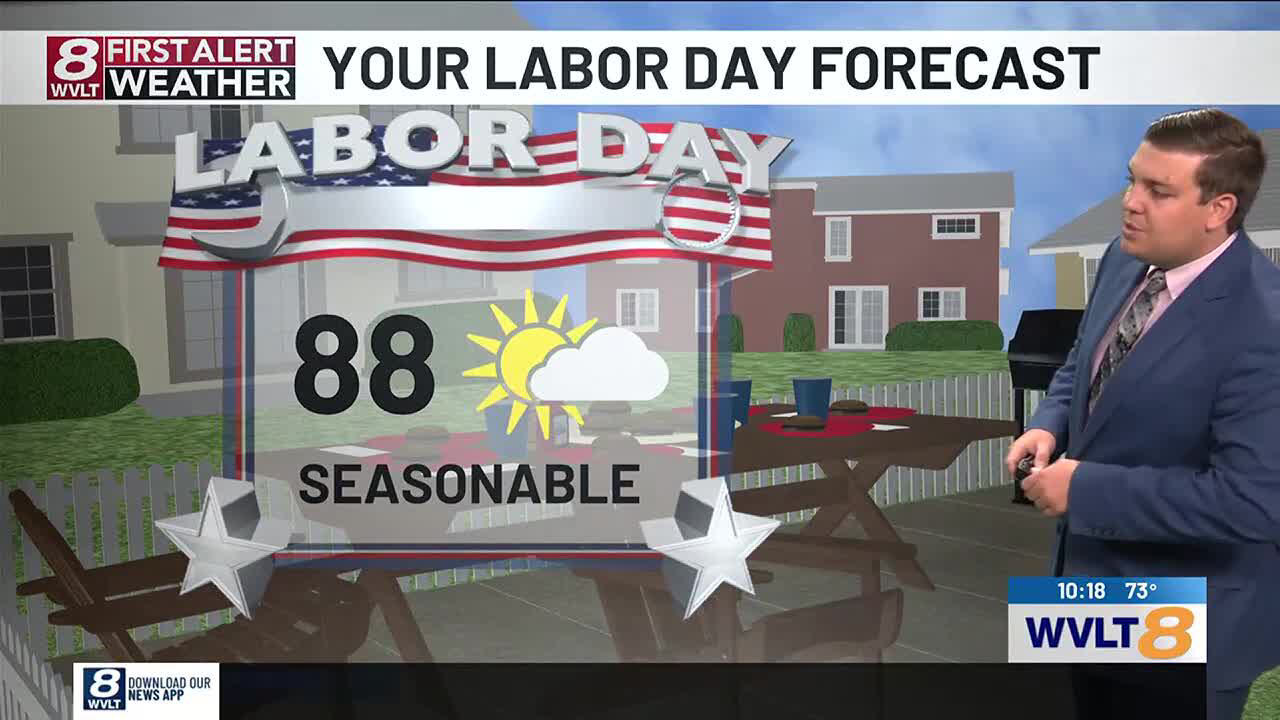Planning For A Period Of Drier Weather

Table of Contents
Conserving Water During Drier Weather
Extended periods of drier weather put a strain on water resources. Implementing water conservation strategies is crucial, both indoors and outdoors. Reducing water usage not only helps the environment but also lowers your water bill.
Reducing Outdoor Water Usage
Outdoor water usage often accounts for a significant portion of total water consumption. By making a few changes, you can drastically reduce your water footprint during drier weather.
- Implement a smart irrigation system using rain sensors: Smart irrigation systems adjust watering schedules based on real-time weather data, preventing unnecessary water waste during rain or periods of high humidity. These systems offer significant water savings and are a worthwhile investment for drier climates.
- Water deeply but less frequently: Deep watering encourages deeper root growth, making plants more drought-tolerant in the long run. This is more effective than frequent, shallow watering which only wets the surface.
- Choose drought-tolerant plants and landscaping: Selecting native plants or those specifically bred for drier conditions minimizes the need for frequent watering. Consider xeriscaping, a landscaping approach that utilizes water-wise plants and design principles.
- Utilize greywater recycling for non-potable uses: Greywater, which is wastewater from showers and sinks, can be safely recycled for garden irrigation, reducing your reliance on potable water. Ensure you follow local regulations regarding greywater recycling.
- Sweep driveways and patios instead of hosing them down: A simple broom can effectively clean outdoor surfaces without wasting gallons of water. This small change adds up over time.
Minimizing Indoor Water Consumption
Indoor water conservation is equally important. Even small leaks can waste significant amounts of water over time.
- Take shorter showers: Reducing shower time by just a few minutes can make a substantial difference in your overall water usage.
- Fix leaky faucets and toilets promptly: A dripping faucet or running toilet can waste gallons of water daily. Address these issues immediately to prevent unnecessary water loss.
- Use water-efficient appliances: Look for appliances with the WaterSense label, indicating they meet strict water-efficiency standards.
- Collect rainwater for non-potable uses: Rain barrels can collect rainwater for watering plants, reducing your reliance on municipal water.
- Install low-flow showerheads and toilet flappers: Low-flow fixtures significantly reduce water consumption without sacrificing performance.
Protecting Your Home from Drier Weather Risks
Drier weather increases the risk of fire and structural damage to your home. Taking preventative measures is crucial for safeguarding your property.
Fire Prevention
Increased dryness raises the risk of wildfires. Proactive steps can significantly reduce this risk.
- Clear dry leaves and brush from around your home: Create a defensible space around your home by removing flammable materials. This helps prevent fire from spreading to your house.
- Maintain a safe distance between your house and vegetation: Keep shrubs and trees trimmed and away from your home's exterior walls.
- Ensure proper functioning of smoke detectors: Test smoke detectors regularly and replace batteries as needed.
- Create a defensible space around your property: This involves clearing vegetation and creating a buffer zone around your home to slow the spread of fire. Consult your local fire department for specific guidelines.
- Be aware of fire restrictions and regulations in your area: Stay informed about local burn bans and fire restrictions during drier weather.
Preventing Structural Damage
Drier weather can also cause structural damage to your home. Regular inspections and maintenance are essential.
- Inspect your roof for leaks and cracks: Repair any damage to prevent water intrusion during rainfall, which can lead to mold and structural issues.
- Check for any cracks in your foundation: Cracks can worsen during drier weather, compromising the structural integrity of your home.
- Ensure gutters and downspouts are clean and clear: Clean gutters prevent water damage to your home's exterior and foundation.
- Monitor for signs of dry rot or wood damage: Address any signs of dry rot or wood damage promptly to prevent further deterioration.
- Consider using weatherstripping to seal windows and doors: This helps prevent drafts and minimizes energy loss, indirectly reducing the strain on your home's structure during extreme weather.
Preparing Your Garden for Drier Weather
Protecting your garden during drier weather requires a shift in gardening practices to ensure the health and survival of your plants.
Mulching and Soil Improvement
Improving soil health is key to helping your plants withstand drier conditions.
- Apply a layer of mulch to retain soil moisture: Mulch helps reduce evaporation and keeps soil cooler and moister for longer periods.
- Amend your soil with compost to improve water retention: Compost adds organic matter, improving soil structure and water retention capacity.
- Use organic matter to improve soil structure: Healthy soil structure promotes better water infiltration and retention.
- Consider using raised garden beds for better control over soil moisture: Raised beds offer better drainage and allow for more precise control over soil moisture.
Protecting Plants from Drought Stress
Even drought-tolerant plants can suffer during prolonged periods of drier weather.
- Water plants deeply at the base, avoiding wetting foliage: Deep watering encourages deep root growth and reduces water loss through evaporation.
- Monitor plants for signs of stress (wilting, leaf discoloration): Address any signs of stress promptly to prevent irreversible damage.
- Use shade cloth to protect sensitive plants from intense sun: Shade cloth reduces sun stress and helps retain soil moisture.
- Group plants with similar water needs together: This allows for more efficient watering.
- Consider using drought-resistant plant varieties: Choose plants that are naturally adapted to drier conditions.
Conclusion
Planning for drier weather requires proactive measures to conserve water, protect your property, and safeguard your garden. By implementing the water-saving strategies and preventative measures outlined in this guide, you can effectively manage the challenges posed by extended dry periods. Don't wait until the drier weather arrives—start planning for drier weather today to ensure a smoother and safer experience! Remember to regularly check your property for any signs of damage and to implement preventative maintenance to further reduce the impact of prolonged periods of drier weather conditions. Take control and prepare for drier weather now!

Featured Posts
-
 Cote D Ivoire Le 4eme Pont D Abidjan Tout Savoir Sur Son Execution Son Cout Et Ses Depenses
May 20, 2025
Cote D Ivoire Le 4eme Pont D Abidjan Tout Savoir Sur Son Execution Son Cout Et Ses Depenses
May 20, 2025 -
 Can Henriksen Replicate Klopp And Tuchels Success At Mainz
May 20, 2025
Can Henriksen Replicate Klopp And Tuchels Success At Mainz
May 20, 2025 -
 Prima Nepoata A Lui Michael Schumacher S A Nascut
May 20, 2025
Prima Nepoata A Lui Michael Schumacher S A Nascut
May 20, 2025 -
 Avauskokoonpano Julkistettu Kamara Ja Pukki Vaihdossa Jacob Friisin Johdolla
May 20, 2025
Avauskokoonpano Julkistettu Kamara Ja Pukki Vaihdossa Jacob Friisin Johdolla
May 20, 2025 -
 The D Wave Quantum Qbts Stock Price Jump Causes And Implications
May 20, 2025
The D Wave Quantum Qbts Stock Price Jump Causes And Implications
May 20, 2025
Latest Posts
-
 Stan Approves David Walliams Fing Fantasy Film In Development
May 20, 2025
Stan Approves David Walliams Fing Fantasy Film In Development
May 20, 2025 -
 Gangsta Granny A Comparative Analysis Of Walliams Works
May 20, 2025
Gangsta Granny A Comparative Analysis Of Walliams Works
May 20, 2025 -
 Is Gangsta Granny Suitable For Young Readers A Parents Guide
May 20, 2025
Is Gangsta Granny Suitable For Young Readers A Parents Guide
May 20, 2025 -
 Understanding The Appeal Of Gangsta Granny
May 20, 2025
Understanding The Appeal Of Gangsta Granny
May 20, 2025 -
 Tv Host Lorraine Kellys Response To David Walliams Cancelled Remarks
May 20, 2025
Tv Host Lorraine Kellys Response To David Walliams Cancelled Remarks
May 20, 2025
